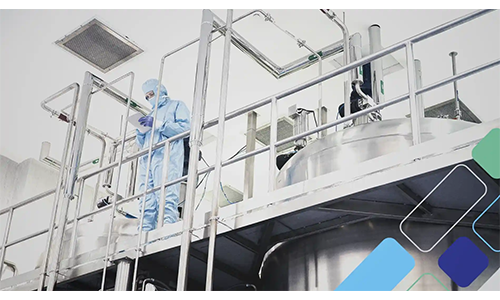As the COVID-19 pandemic continues to wane, the Occupational Safety and Health Administration (OSHA) has expanded its aggressive enforcement program to include restaurants.
Earlier this year, OSHA unleashed a National Emphasis Program (NEP) for stepped-up enforcement efforts nationwide, focusing especially on COVID-19 workplace practices. The agency is vigorously pursuing employers it believes have strayed from the agency’s illness guidance, particularly the 6,000-word guidance it issued Jan. 29 under an order issued by President Biden the day after his inauguration.
OSHA has pressed ahead with the NEP and in spite of the fact that its attempt to create Emergency Temporary Standard regulations has stalled, they are currently undergoing review at the White House and are expected to be issued no later than June.
Although the NEP initially targeted the hospital and healthcare industry, healthcare providers, assisted living facilities and home healthcare services, OSHA is now going after the restaurant industry as well, including both full-service and limited-service establishments.
As the number of COVID cases decline and more people are vaccinated, jurisdictions around the country are easing up on restaurant capacity limits and other restrictions. “While such changes are much-needed in an industry hit hard by the pandemic, restaurants should be on heightened alert to ensure COVID-19 workplace safety protocols are in place,” warn attorneys for the Jackson Lewis law firm.
They stress that OSHA can show up unannounced and declare it is conducting a COVID-19 inspection of a restaurant if that establishment is on the target list generated by the agency, based on employee complaints.
The Jackson Lewis attorneys suggest restaurant management:
• Review all recording and reporting of occupational injuries and illness practices on the OSHA 300 Injury and Illness Log.
• Review the establishment’s COVID-19 Risk Assessment and update any COVID-19 prevention policies.
• Review personal protective equipment (PPE) compliance, policies and documentation of the same.
• Continue to monitor employee exposures and track the same.
• Continue to train and retrain employees on COVID-19 sanitation, PPE and other related protocols, and document this training.
• Ensure sanitation protocols are compliant with local, state and federal standards. Be sure to confirm sanitation logs are completed timely and accurately.
• Encourage employees to raise concerns internally so any potential issues can be promptly addressed before any OSHA site visit or to preempt any complaints to OSHA. Consider implementing anonymous hotlines for employees to raise concerns.
• In addition to federal OSHA guidance, be sure to review any state and local safety laws and health guidance.
“The longer the pandemic continues, the easier it is to become complacent,” the attorneys note. “OSHA’s focus on the industry reminds restaurant employers of the need to renew efforts to ensure all practices and documentation are up to date, should OSHA conduct a routine inspection or in case of an investigation based on complaints.”
Employers Fight Back
Other industries targeted by the NEP sure to see future visits from OSHA inspectors are general warehousing and storage, temporary help and staffing agencies, discount department stores, supermarkets and grocery stores (excluding convenience stores), and poultry and meat slaughtering and processing plants (some of which already have been inspected and drew citations).
Secondary targets include industries where workers come into routine contact with large numbers of co-workers and the general public and as a result are considered to be at higher risk of contracting the virus. Among these are manufacturing (including food and beverage manufacturing), construction, commercial and industrial equipment maintenance, and transportation services.
OSHA reports that 408 workplaces have been cited (with around 1,150 citations issued) for COVID-19-related alleged violations between July 1, 2020, and April 12, 2021. Although there has been a wide range of cited violations, most are for respiratory protection violations (with N95 respirator use being at the top of the list) and recordkeeping violations.
But employers are fighting back. “Typically, only 8% of cited employers contest citations. Not so for COVID-19,” say Jackson Lewis attorneys. Employers who were cited for COVID-19 concerns have contested the citations at more than quintuple the ordinary contest rate, to a whopping 42%.
One reason is that during the pandemic OSHA has seen an unusually large number of employee complaints. “Because these cases arose from a novel situation, OSHA applied pre-pandemic standards in novel ways, leading to disputes between the agency and employers over appropriate use and interpretations of standards relating to respiratory protection, sanitation, PPE and recordkeeping,” the attorneys point out.
For example, many employers have contested citations alleging failure to record or report “work-related” instances of COVID-19 exposure because arriving at the determination that employee exposures arose in the workplace or in the community was in many cases nearly impossible.
“When OSHA receives employee complaints of COVID-19 exposures and cites an employer, it effectively places the onus on the employer to prove the employee caught the virus from a family member, in a grocery store, or from dining with friends in a restaurant—an impossible task,” the attorneys explain.
Another problem is the often conflicting and shifting guidance that has originated from the Centers for Disease Control and Prevention (CDC), OSHA, state departments of health, and state and local executive orders. Employers also have found themselves faced with unrealistic pressure when it comes to being able to obtain sufficient PPE supplies and (especially when it comes to healthcare providers) respiratory protection.
The traditional approach is to seek resolution of a citation is for the employer to go into an informal conference with OSHA employees and then agree to accept the citation with a penalty reduction. Once they make the reduced payment and provide the required documentation of hazard abatement, employers hope to close the matter and move on.
“This short-term solution may provide false hope, especially if the employer waives potential defenses such as employee misconduct, technological infeasibility or greater hazard,” say the Jackson Lewis attorneys. They argue that it ignores the hidden costs of accepting a citation or taking a quick settlement offer during an informal conference that finalizes the citation with monetary or classification reductions (e.g., from “Serious” to “Other Than Serious”).
These hidden costs can include exposure to repeated subsequent violations that later incur increased monetary penalties; lost business opportunities; and a public record of a violation on display for competitors, news sources and labor organizations that can irreparably damage reputations.
“During the COVID-19 pandemic, employers have made greater use of the ability to contest citations, for good reasons,” the attorneys contend. “Employers have a right to do so and should consider their legal options when they are faced with a citation for COVID-19 exposures over which they may not have meaningful control.”










































































